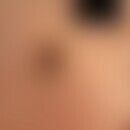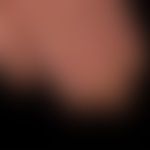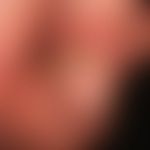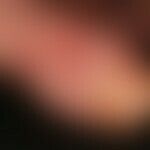Synonym(s)
chronic nail crease inflammation; chronic paronychia; Chronic paronychia; Panaritium paraunguale
DefinitionThis section has been translated automatically.
Frequent, chronic, also chronically recurrent, painful, mostly microbial (mainly bacterial) induced inflammation of the paronychium.
EtiopathogenesisThis section has been translated automatically.
The causes of chronic paronychia are multifactorial.
- Mostly irritations caused by lyes, acids, foreign bodies are intiating.
- Often also caused by aggressive nail care with cutting of the cuticle. S.a.u. Unguis incarnatus).
- Overlapping by microbial factors such as yeasts (see Paronychia candidamycetica), staphylococci, Pseudomonas aeruginosa (green colouring of the nail).
- Often also occupational (see below occupational dermatoses)
- It is more common in peripheral circulatory disorders or as a result of drug therapies - e.g. after the use of retinoids and EGFR inhibitors such as cetuximab.
You might also be interested in
ManifestationThis section has been translated automatically.
It is mainly women who are affected. Predisposing are wet works. See also the special features of Paronychia candidamycetica.
TherapyThis section has been translated automatically.
- Elimination of predisposing factors (wetness, aggressive manicuring)
- Targeted protective measures (wearing gloves, avoiding direct contact with aggressive chemicals)
- In case of chronic recurrent purulent paronychia see below acute paronychia. In this case, detection of the pathogen is recommended.
- Local therapy with antibiotic ointments (e.g. ointments containing gentamycin)
- In case of extensive findings and/or progression of inflammation under external therapy, antibiotic systemic therapy according to antibiogram. Initially cephalosporins like cefuroxime (e.g. Elobact) 2 times/day 500 mg p.o. or gyrase inhibitors like ofloxacin (e.g. Tavanic 200 mg/day p.o.).
- Subsequent skin care: Desiccated nail walls should be regularly maintained with an O/W emulsion.
- Application of 0.5% timolol (Timogel®) topically twice daily under occlusion for one month resulted in significant improvement in patients with paronychia and pseudopyogenic granuloma after treatment with EGFR inhibitors and capecitabine. Previously, the successful use of 1% propranolol cream had been described.
General therapyThis section has been translated automatically.
Eliminate or change predisposing factors if possible, such as sicca symptoms in atopic eczema, diabetes mellitus, acrocyanosis, hyperhidrosis Discontinue causative medication, e.g. retinoids. If necessary, change professions in baking, nursing, etc.
LiteratureThis section has been translated automatically.
- Chanprapaph K et al (2014) Epidermal growth factor receptor inhibitors: a review of cutaneous adverse events and management. Dermatol Res Pract doi: 10.1155/2014/734249
- Di Costanzo L et al (2014) Acrodermatitis continua of Hallopeau (ACH): two cases successfully treated with adalimumab. J Dermatologist Treat 25:489-494
- Iorizzo M (2015) Tips to treat the 5 most common nail disorders: brittle nails, onycholysis, paronychia, psoriasis, onychomycosis. Dermatol Clin 33:175-183
- Shafritz AB et al (2014) Acute and chronic paronychia of the hand. J Am AcadOrthop Surg 22: 165-174
Outgoing links (16)
Acrocyanosis; Acrodermatitis continua suppurativa; Acute paronychia; Atopic dermatitis (overview); Candida paronychia; Cefuroxime; Cephalosporins; Cetuximab; Gyrase inhibitors; Gyrase-Hemmer; Fluorchinolone; ; Hyperhidrosis (overview); ... Show allDisclaimer
Please ask your physician for a reliable diagnosis. This website is only meant as a reference.












